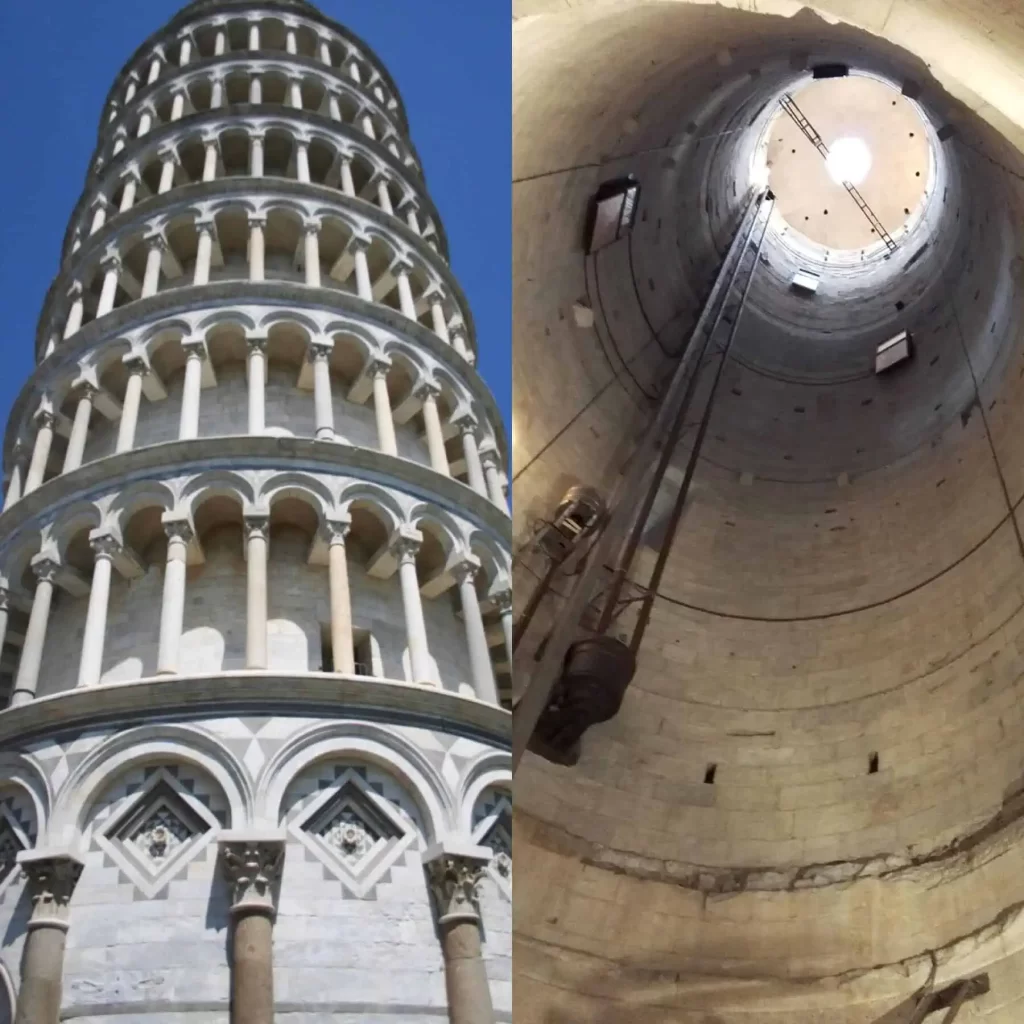Did you ever know that the Leaning Tower of Pisa is empty from the inside and not a multi-story residential tower?
The Leaning Tower of Pisa
It is a cathedral bell tower in the Italian city of Pisa, built in the Field of Miracles.
Let’s get acquainted with the Leaning Tower of Pisa from a structural point of view:
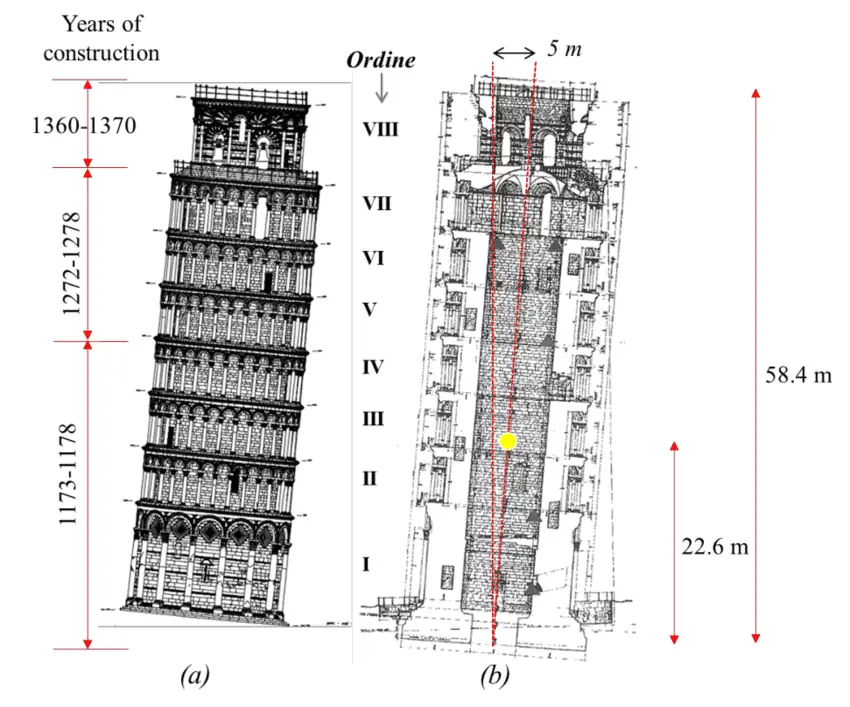
The Leaning Tower of Pisa Explained
Its construction began in 1173 AD and they began to establish the bases and then the walls, and after the building reached the third floor, it was noticed that there was a slope.
Can you imagine that a tower weighing 14,500 tons is built on foundations 3 m deep and installed on sand and silt?!!
After discovering the slope, the engineers built the rest of the floors (external walls) so that the height of the floor in the inclined direction is greater than its height in the other direction.
Which increased the inclination of the tower due to the sinking of the foundations in a greater proportion in the soil, due to the increase in the weight of the floors.
The Leaning Tower of Pisa is the campanile of the cathedral of the Italian city of Pisa, known worldwide for its nearly four-degree lean, the result of an unstable foundation.
Leaning Tower of Pisa – Stricture
The height of the tower is 55.86 metres (183 feet 3 inches) from the ground on the low side and 56.67 m (185 ft 11 in) on the high side. The width of the walls at the base is 2.44 m (8 ft 0 in). Its weight is estimated at 14,500 tonnes (16,000 short tons). The tower has 296 or 294 steps; the seventh floor has two fewer steps on the north-facing staircase.
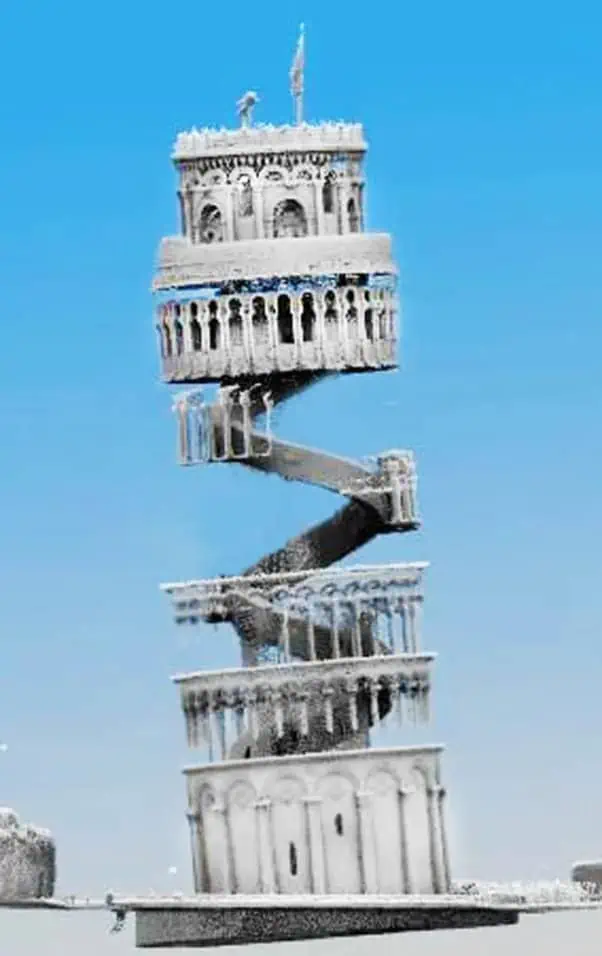
The staircase is positioned between the outer wall and the inner wall of the tubular form – Leaning Tower of Pisa
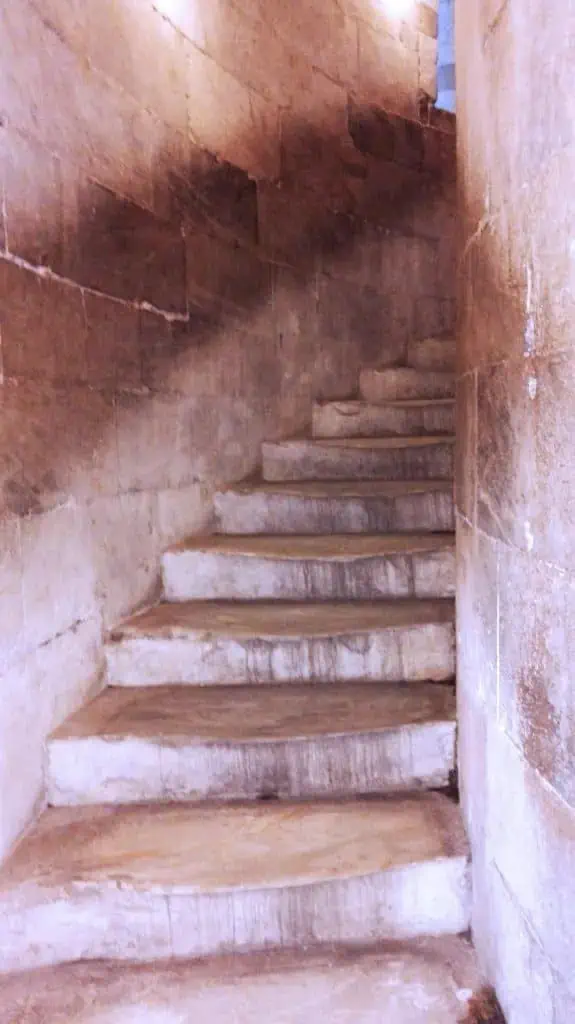
The tower began to lean during construction in the 12th century, due to soft ground which could not properly support the structure’s weight, and it worsened through the completion of construction in the 14th century. By 1990, the tilt had reached 5.5 degrees. The structure was stabilized by remedial work between 1993 and 2001, which reduced the tilt to 3.97 degrees.
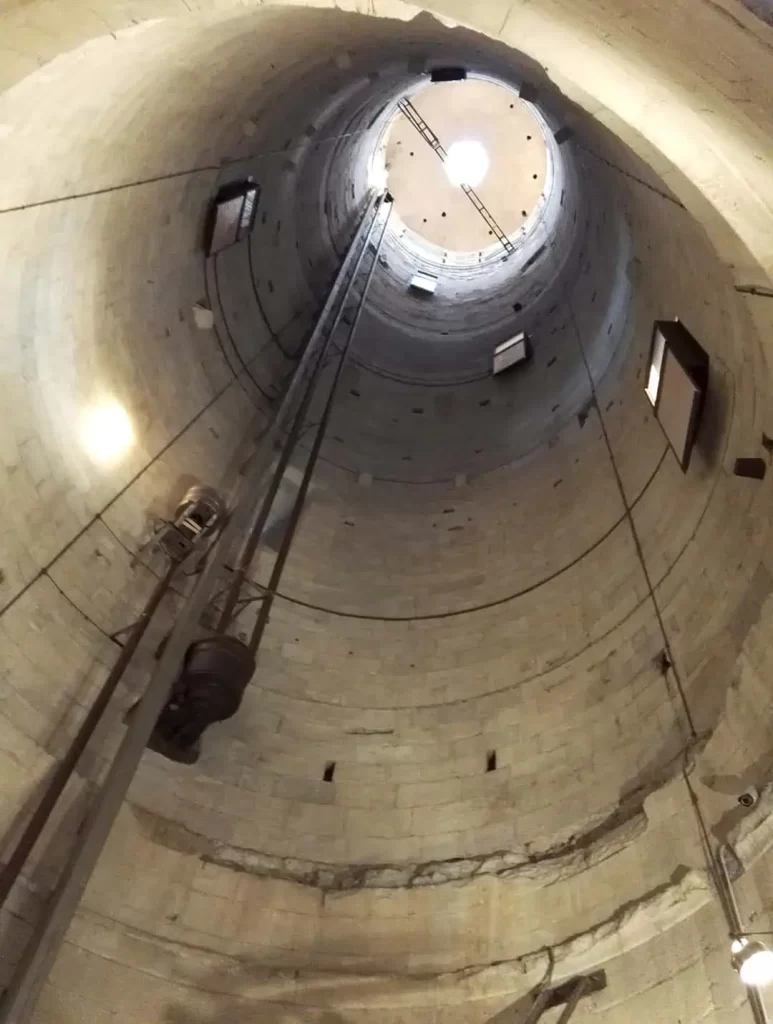
Among the reasons why the tower did not collapse:
The construction continued for 199 years, and the construction halt in it for a long time is one of the reasons that allowed the soil to compact, which reduced the rate of inclination, and thus the tower did not collapse completely.
The clay soil helped and the main reason for the tower’s tendency not to collapse and its resilience in front of 4 earthquakes.
The engineers calculated the center of gravity of the tower, and it was concluded from the calculations that the tower collapsed completely upon reaching a slope of 5.44 degrees. The tower was closed in 1990 at a tilt of 5.5 degrees, yet the tower did not collapse.
Attempts made to stop the tilt of the tower and not collapse:
Digging deep holes in the ground at a depth of 40 m, and installing the tower with iron cables through the holes. Liquid nitrogen was pumped, which led to the freezing of water in the soil and its expansion and contraction again, which led to the subsidence of the soil and the subsidence of the foundations, and consequently the slope of the tower at the rate of its inclination throughout these years.
They dug 361 holes and injected the soil with 90 tons of cement, which led to the tower’s tilt strongly.
And finally, Soil Extraction was used in 1990:
The soil was removed from the non-slanted side so that the tower tilts in that direction, then iron cables were used to fix the tower bases in the ground and the slope was reduced to 4 bikes, and this was what it was at the beginning.
The engineers could have made it vertical, but they didn’t want to lose its fame and tourist value because of its tilt.
And after that was completed, the tower was opened.
And it was confirmed that the tower could endure without any collapse for 300 years.
